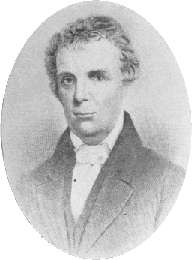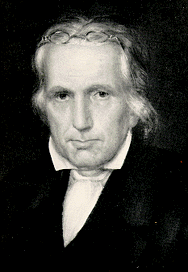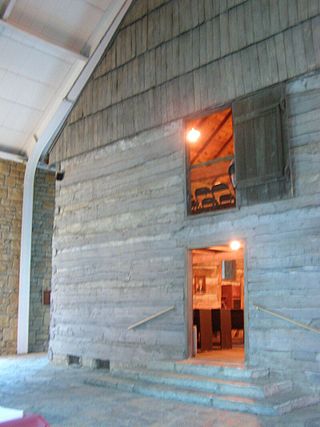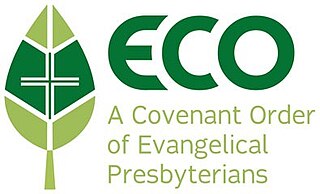
The Christian Church (Disciples of Christ) is a mainline Protestant Christian denomination in the United States and Canada. The denomination started with the Restoration Movement during the Second Great Awakening, first existing during the 19th century as a loose association of churches working towards Christian unity, then slowly forming quasi-denominational structures through missionary societies, regional associations, and an international convention. In 1968, the Disciples of Christ officially adopted a denominational structure at which time a group of churches left to remain nondenominational.

The Presbyterian Church (USA), abbreviated PCUSA, is a mainline Protestant denomination in the United States. It is the largest Presbyterian denomination in the country, known for its progressive stance on doctrine and its ordaining of women and members of the LGBT community as elders and ministers. The Presbyterian Church (USA) was established with the 1983 merger of the Presbyterian Church in the United States, whose churches were located in the Southern and border states, with the United Presbyterian Church in the United States of America, whose congregations could be found in every state.

The Westminster Confession of Faith, or simply the Westminster Confession, is a Reformed confession of faith. Drawn up by the 1646 Westminster Assembly as part of the Westminster Standards to be a confession of the Church of England, it became and remains the "subordinate standard" of doctrine in the Church of Scotland and has been influential within Presbyterian churches worldwide.

The Cumberland Presbyterian Church is a Presbyterian denomination spawned by the Second Great Awakening. In 2019, it had 65,087 members and 673 congregations, of which 51 were located outside of the United States. The word Cumberland comes from the Cumberland River valley where the church was founded.

The Restoration Movement is a Christian movement that began on the United States frontier during the Second Great Awakening (1790–1840) of the early 19th century. The pioneers of this movement were seeking to reform the church from within and sought "the unification of all Christians in a single body patterned after the church of the New Testament."

The Presbyterian Church in the United States was a Protestant denomination in the Southern and border states of the United States that existed from 1861 to 1983. That year, it merged with the United Presbyterian Church in the United States of America (UPCUSA) to form the Presbyterian Church (USA).

The Non-subscribing Presbyterian Church of Ireland is a non-creedal Christian denomination, which maintains a great emphasis on individual conscience in matters of Christian faith.

The Free Presbyterian Church of Scotland was formed in 1893. The Church identifies itself as the spiritual descendant of the Scottish Reformation. The Church web-site states that it is 'the constitutional heir of the historic Church of Scotland'. Its adherents are occasionally referred to as Seceders or the Wee Wee Frees. Although small, the church has congregations on five continents.

The Presbyterian Church in the United States of America (PCUSA) was a Presbyterian denomination existing from 1789 to 1958. In that year, the PCUSA merged with the United Presbyterian Church of North America. The new church was named the United Presbyterian Church in the United States of America. It was a predecessor to the contemporary Presbyterian Church (USA).

Barton Warren Stone was an American evangelist during the early 19th-century Second Great Awakening in the United States. First ordained a Presbyterian minister, he and four other ministers of the Washington Presbytery resigned after arguments about doctrine and enforcement of policy by the Kentucky Synod. This was in 1803, after Stone had helped lead the mammoth Cane Ridge Revival, a several-day communion season attended by nearly 20,000 persons.

Thomas Campbell was a Presbyterian minister who became prominent during the Second Great Awakening of the United States. Born in County Down, he began a religious reform movement on the American frontier. He was joined in the work by his son, Alexander. Their movement, known as the "Disciples of Christ", merged in 1832 with the similar movement led by Barton W. Stone to form what is now described as the American Restoration Movement.
The Christian Connection was a Christian movement in the United States of America that developed in several places during the late 18th and early 19th centuries, composed of members who withdrew from other Christian denominations. It was influenced by settling the frontier as well as the formation of the new United States and its separation from Great Britain. The Christian Connection professed no creed, instead relying strictly on the Bible.
Kentucky Synod was a synod of the Presbyterian Church in the United States of America established in the late 18th century.

David Purviance was a member of the Kentucky legislature, a member of the Ohio legislature, and an important early leader in the Stone-Campbell Restoration Movement. He was also an early trustee (1819–1836) of Miami University in Oxford, Ohio, and often served as its president pro tempore.

Cane Ridge Meeting House is a historic church building on Cane Ridge near Paris, Kentucky built in 1791. It is one of the oldest church buildings in Kentucky and the largest one room log structure. The church was the site of a large frontier Christian revival in 1801 hosted by the local Presbyterian congregation that met in the building, with nearly 10,000 people attending. According to the museum "[i]n 1804, a small group of Presbyterian ministers from Kentucky and Ohio... penned and signed a document, "The Last Will and Testament of the Springfield Presbytery", at Cane Ridge that resulted in the birth of a movement seeking unity among Christians along non-sectarian lines. They would call themselves simply "Christians. The Christian Church, the Churches of Christ (non-instrumental), and the Christian Churches (independent) of the Stone-Campbell movement trace their origins here. This movement is often noted as the first one indigenous to American soil." In the 1930s a stone building was constructed around the original log structure. The church is still used for worship.
The Christians (Stone Movement) were a group arising during the Second Great Awakening of the early 19th century. The most prominent leader was Barton W. Stone. The group was committed to restoring primitive Christianity. It merged with the Disciples of Christ (Campbell Movement) in 1832 to form what is now described as the American Restoration Movement (also known as the Stone-Campbell Restoration Movement.)

ECO: A Covenant Order of Evangelical Presbyterians is an evangelical Presbyterian denomination in the United States. As a Presbyterian church, ECO adheres to Reformed theology and Presbyterian polity. It was established in 2012 by former congregations and members of the Presbyterian Church (USA), abbreviated PC(USA). Denominational disputes over theology—particularly ordination of practicing homosexuals as pastors and gay marriage—and bureaucracy led to the founding of ECO. In 2018, ECO has over 383 congregations, 103,425 covenant partners and over 500 pastors. ECO churches are egalitarian in beliefs and ordain women as pastors and elders.

The International Presbyterian Church(IPC) is a Reformed church in the United Kingdom, the European Union and South Korea, that holds to the Presbyterian confession of faith, with common commitments, purpose and accountability and government.

Presbyterianism has had a presence in the United States since colonial times and has exerted an important influence over broader American religion and culture.
The Adopting Act of 1729 was an act of the Synod of Philadelphia that made the Westminster Standards, particularly the Westminster Confession of Faith, the official confessional statements for Presbyterian churches in colonial America. Presbyterian ministers were required to believe or "subscribe" to the "essential and necessary" parts of the standards, but defining what was essential and necessary was left to individual presbyteries to determine.
















